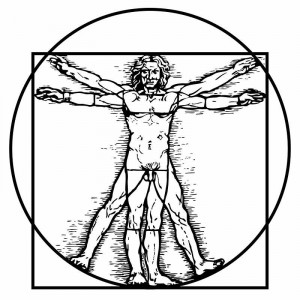How Website Structure & Information Architecture Should Mirror Your Business Goals
Thomas is the CEO of a major corporation. He had supervised a recent website redesign project, loved the snazzy new look with bells and whistles created by a talented graphics designer – but was calling me to help with a problem. His beautiful new website wasn’t getting many visitors! “Why don’t people want to visit […]
Thomas is the CEO of a major corporation. He had supervised a recent website redesign project, loved the snazzy new look with bells and whistles created by a talented graphics designer – but was calling me to help with a problem.
His beautiful new website wasn’t getting many visitors!
“Why don’t people want to visit our lovely website?” Thomas wailed, genuinely puzzled that the results of his intensive efforts weren’t as rosy as he had expected. As a strategic SEO consultant, the reasons were glaringly obvious to me… but I had to soften the impact, and gently explain what went wrong.
Together, we quickly checked the site’s ranking on Google for his top 50 keywords. They weren’t anywhere in the top 10 results. Or even 20.
You see, the not-so-apparent reason for the ‘failed’ website was the lack of something essential for both higher search engine rankings, and to enhance the visitor experience which can convert a prospect into a customer.
What’s that, you ask?
Thomas’s new website, though visually appealing and technology-rich, was sorely lacking in a well planned information architecture and website structure.
But what is “information architecture”? And how does “website structure” differ from design?
A formal definition of “information architecture” would likely put you to sleep! So let’s simply call it the art of organizing and labeling website content, and bringing design and architecture principles to bear on it.
To understand this better, we’ll look at the skeleton of a website, shorn of flesh and skin, stripped down to the basic fundamentals of what shapes and strengthens it – from within.
Basic Concepts Of Information Architecture
In medical school, trainees begin by learning about human anatomy. Knowing what makes up the body helps understand (and later treat) diseases that affect it.
At the heart of understanding website structure, and planning your strategy for information architecture, lies a need to know about terms like semantic search, latent semantic indexing, knowledge graph, and SEO automation.
Semantic search is an attempt to improve search accuracy by predicting the intent of a searcher. The shift from blindly matching keywords typed into a search box against a massive database, to a more “intelligent” form of search that attempts to understand what those words actually mean to the user, has serious implications on strategic SEO for many business owners.
Latent Semantic Indexing is an indexing and retrieval method that was designed to identify patterns in the relationship between terms and concepts within any text.
By providing unique context for each search term or phrase, it ensures that a search for ‘Apple’ computers will retrieve pages with iMac or iPad on it, while a search for ‘Apple’ fruit will pull a different set of results on gardening and growing apples.
The “knowledge graph” is made up of collated information that will help search services like Google deliver more than just a list of 10 websites, and provide contextual information that solves users’ problems better (even when those problems are not explicitly voiced by the user)!
The implications are clear. Keywords are open to being manipulated. User intent cannot be gamed so easily.

At first glance, this seems a daunting challenge. But it’s really straightforward if you proceed with a rational plan rooted in strategy, founded on information architecture principles and framed upon a solid website structure.
Before we explore these elements in greater depth, I’d like to make something clear.
This Is Not A Fight Between Designers & SEO Experts!
Traditionally, these two camps have been at loggerheads. Designers feel SEO ruins their carefully planned look and feel. SEO hotshots complain that higher ranking is sacrificed on the altar of a prettier website.
Yes, it is possible for a design-obsessed structure to wreak havoc with a site’s SEO. It’s also possible for a website driven entirely by SEO to destroy a brand or ruin sales potential. With planning and high quality implementation, the strengths of both specialties can be harnessed to offer a business incredible synergy.
Exploring how this happy union can be achieved is the goal of this report.
Today, any successful website needs:
- SEO (to drive relevant, quality traffic that is looking to buy),
- usability (to manage and convert these visitors into paying customers), and
- the ability synergize both to work in concert, building your brand and growing your business.
Information Architecture & Getting Inside Your Prospect’s Mind

Your ideal prospect visits your website to see if you’ll help find solutions to her problems – not to read a self-serving brochure about your business.
Keeping this in mind, your information architecture must be based on the best ways to serve your visitor, based on an intimate understanding of ‘user logic’.
Let’s take a hypothetical case of a young couple planning a holiday to Norway. She looks at him and says, “Let’s stay at this hotel in Oslo, honey!”
And with that initial spark of desire, the journey of online exploration begins. They type the name of a hotel (or maybe just “Oslo hotel”) into Google and click the Search button.
Will they find your hotel’s website ranked on the front page?
Findability is only the first step. The title and description of your listing must address their specific problem – Where to stay on our trip to Oslo? If you win the ‘click’, that delivers a prospective guest to your hotel’s website.
Now on your landing page, the couple wants more information. About their stay. About your facilities. Your pricing. Room availability. Tourism assistance. And more.
If your landing page copy and content matches their desire for knowledge and satisfies their needs, you’ll create trust and boost your chance of getting a sale.
This logical sequence – desire, findability, information, trust – is more or less constant across industries and niches. In one form or another, it exists in your field too. And your business website must match the flow, tap into the conversation that’s going on inside your prospect’s head, and join it to engage, inform, entertain and convince.
Before getting into the nitty gritty of content hierarchy and website structure that will help create this trusting relationship with prospects, I’ll take a step back to address another overlooked facet of the strategic SEO process.
Internal Link Structure & Information Architecture
Think about information architecture in the same light as planning and building a house. You would draw up a blueprint, then lay a firm foundation, construct a framework, and only then add on the layers that turn the scaffolding into a full fledged building.
Constructing an SEO optimized website that is strategically designed to fulfill the business goals of your enterprise follows essentially the same process.
When done correctly, a website’s information architecture can offer context for your content, present it in a manner that is friendly to search engine spiders and yet easy for human visitors to navigate, and ideally set up in a way that gives access to any section with just 3 clicks – or less.
The Myth Of “Home Page Focus”
Very simple, logical website structure (like I’ve explained before) that is based upon a user’s intent behind search keyword phrases will turn every category, sub-category and topic page into a “home page”. This is awesome, because:
- Your visitor will click fewer links (remember the 3 click rule?) to reach other sections of your website – something every usability expert and designer intuitively values, and website owners must consider seriously since it impacts the way Web search works.
- You have less need for ongoing SEO to improve and/or defend rankings, and can focus it instead on growing your business with scalable solutions that last longer.
- You’ll become more authoritative on each level of your URL structure, as new topic pages added into your silo will bring additional value to the pages higher up in the hierarchy because of your strategic internal linking.
- You’ll have the freedom to sculpt PR and pass link value to handpicked relevant pages or topics outside the silo. For example, if you sell red shoes, you could link to related items like red belts (which may reside in another silo) and achieve higher sales conversions.
- You can control and direct the way search engine spiders and Web crawlers find, interpret and understand your URLs before indexing them.
- The strategic use of navigational breadcrumb links lets users zoom in to get a close up, or zoom out for a broader context.
- Such logical structuring is not vulnerable to algorithm changes and shifts in the future.
- Each level in the URL structure hierarchy becomes “almost a business or niche” in itself. Visitors get a great first impression about your business when they land on such a page, and will view your site as a place to go when they need help, knowing they’ll be able to easily find other related choices to select from. This boosts your image and builds your brand.
- It is easier to get links from other niche blogs, forums and social networks. External links pointing to a sub-category page bring link value, leading crawlers to your site from relevant ‘authority’ sites that might have already established trust. If you woke up one morning and search engines no longer existed, these sources of traffic would still be valuable.
Achieving the technical elements of SEO is easy even using free tools like Magento and WordPress. Combining elements of SEO and design into the best possible strategy will increase sales. A silo structure for Web content is not just about keyword stuffing. This has nothing to do with spamming, and your intention behind siloing your content shouldn’t just be to get more traffic. Your SEO goal is ultimately to maximize your business and profits.
Layer On Design – But Only At The End!
With the framework of your content website solidly in place, and a silo layout combined with good URL structure defined in consultation with an SEO specialist, you can now team up with a usability expert and a good designer to build a user-friendly, information-rich, self-sustaining website.
- Your site will now become the best salesperson in your organization, working day and night to generate leads and close sales, while serving as a brand manager too.
- The silo structure upon which it is based will order your content in a way that is easy for users to find what they are looking for, just like it is to locate books in a library. This brings order out of chaos.
- Each time you add fresh content or include a new product to your catalog or store, the carefully planned URL structure will build an internal link site-wide to other pages in the category, and up one level in the silo.
- Your information architecture will ensure that link value is passed along effectively and ensures maximum crawlability by search engine spiders.
- You won’t be stuck with time-consuming SEO efforts on an ongoing basis. All new content added to the site automatically fits into its optimized structure, resulting in “auto-pilot SEO” as you enjoy content growth.
- Your website structure and layout will help search engines define context and theme on a very granular level.
But this happy result requires a preparatory SEO strategy because, if not done correctly, it can land you in trouble with a nightmare of duplicate content issues. It is not something you can plan to splash on top, like chocolate syrup on an ice-cream sundae! You must take these steps well ahead of the site building effort, in order to have everything working together in synergy to explode the impact on your business.
Contributing authors are invited to create content for Search Engine Land and are chosen for their expertise and contribution to the search community. Our contributors work under the oversight of the editorial staff and contributions are checked for quality and relevance to our readers. The opinions they express are their own.
Related stories
